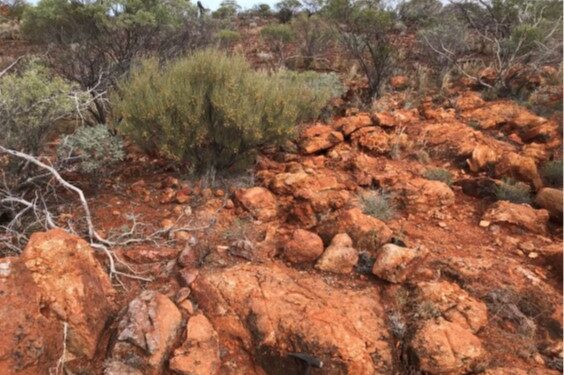St George Mining Limited (ASX: SGQ) has identified significant exploration potential for lithium pegmatite mineralisation extending south from its high-grade Mt Alexander Ni-Cu-PGE Project located in the north-eastern Goldfields of Western Australia.
“The results from our initial field work to scope the lithium potential at Mt Alexander are very encouraging and support a compelling case to accelerate exploration for lithium pegmatite mineralisation,” Executive Chairman, John Prineas, said.
“We will advance the lithium exploration in tandem with drill testing several very promising, recently identified nickel targets announced on September 1, 2022.
“We are particularly excited by the strong rubidium values in sample assays received to date – this is an excellent indicator of pegmatites favourable for lithium mineralisation.
“The initial results highlight the lithium potential from the extensive pegmatite outcrop at our Project. Mt Alexander has never been explored for lithium, providing St George with an outstanding opportunity to make a greenfields discovery in what has become a lithium exploration hotspot.
“The pegmatites at Mt Alexander may be part of the same system that hosts the major lithium discovery announced by Red Dirt Metals at its Mt Ida Project to the south-east of our ground, which further underpins the lithium prospectivity at our Project.
“The lithium opportunity at Mt Alexander is a perfect complement to our nickel sulphide discoveries at the project and expands our focus on EV and clean energy metals.”
Reconnaissance field work
Assays for the initial rock chip sampling of pegmatite outcrop at Mt Alexander have confirmed a geochemistry indicative of lithium, caesium, tantalum (LCT) fertile pegmatites. 45 rock chip samples were collected during preliminary mapping in selective areas across the 15km strike of the prospective pegmatite outcrops.
Anomalous values for lithium, caesium and tantalum were noted in numerous samples with up to 157ppm Li, 44ppm Cs and 125ppm Ta.
The pegmatite outcrops at Mt Alexander are generally highly weathered. In this kind of terrain, key indicator elements such as rubidium are considered reliable pathfinders as lithium may have weathered out at surface.
Assays for rock chip samples at Mt Alexander returned highly anomalous values for rubidium of up to 0.6% Rb in a strongly weathered pegmatite. Anomalous rubidium signifies the presence of a differentiated pegmatite, which is a key feature for indicating the potential of the pegmatite to be lithium bearing.
Field mapping at Mt Alexander has identified numerous east-west striking pegmatite dykes outcropping across an area extending over 15km north-south, along the greenstone belt west of the Copperfield Granite.
This geological setting, including the east-west strike of the pegmatite dykes, is very similar to the lithium discovery by Red Dirt at its Mt Ida Project, along strike south-east from St George’s tenements.
Further sampling and field mapping underway: St George has commenced a detailed field exploration campaign at Mt Alexander to define targets for drill testing.
The field work includes mapping and systematic sampling of the numerous outcropping pegmatite dykes along the belt. The width at surface of the pegmatites mapped to date is up to 15m though the true thickness is not yet known because of the uncertainty of the dip angle.
This will be further clarified by the current field mapping. Importantly, the prospective pegmatite outcrops have the width and strike that could provide scale to any potential discovery.
Targets for drill testing will be finalised once results of the field campaign are assessed. The maiden drill programme for the lithium targets is scheduled to commence in Q4 2022.
For further information please visit: https://stgm.com.au/












